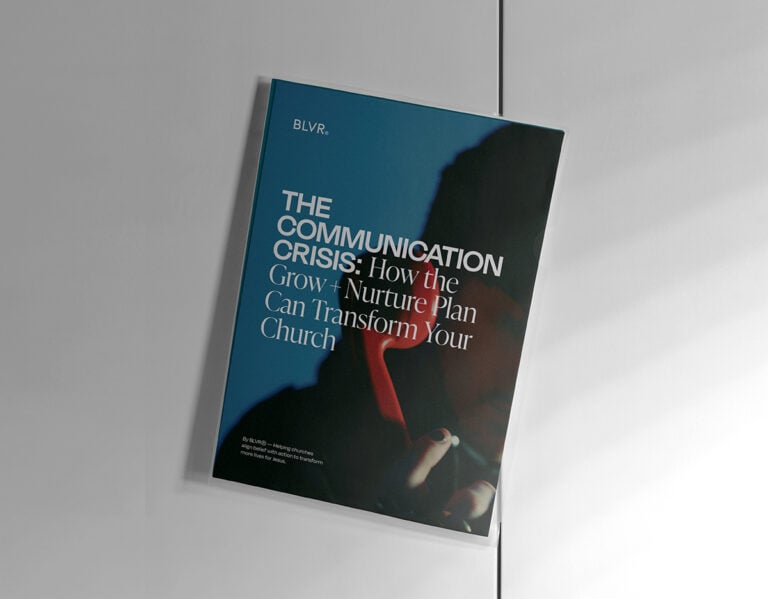
Church Branding / BY Adam Mcwethy
Your Church Contact List: The Asset You’re Neglecting That’s Costing You Souls
Published On 03.31.2025
Article
The Missed Opportunity in Your Church Communications
As a deacon at my church, I’ve had a front-row seat to some of the inner workings of ministry strategy. Recently, I dove into our church contact database to help develop outreach initiatives for the unchurched in our community. What I found left me bewildered.
Our contact list—supposedly one of our most valuable ministry tools—was a disaster. It was hopelessly outdated. Critical data was missing. We couldn’t even differentiate between men and women in many cases. And everyone—from new visitors to decades-long members, from addiction-recovery seekers to marriage mentors—was lumped into one massive, undifferentiated bucket.
Sound familiar? You’re not alone.
Here’s the uncomfortable truth: The mismanagement and neglect of your church contact list isn’t just an administrative oversight—it’s actively preventing you from effectively communicating with your community. It’s creating a Say-Do Gap® of massive proportions. You say you want to reach the lost and nurture believers, but you’re doing almost nothing to organize the very information that would make this possible.
The solution isn’t complicated, but it does require intention: First, clean up your existing contact list. Then, implement strategic efforts to grow it consistently.
When this Say-Do Gap closes, something remarkable happens: your church finally stands in a position to nurture people effectively on their spiritual formation path. Every email, every text, every communication lands with more relevance and purpose.
Here’s the key takeaway you can’t afford to miss: Your church contact list is one of the most valuable assets your ministry possesses. It’s not just data—it’s a lifeline to souls. And it’s time to start treating it that way.
“And the Lord was adding to their number, day by day those who were being saved.”
— Acts 2:47b
What True Contact List Growth Really Means
When we talk about “growth” in this context, we’re not addressing church growth generally. We’re focusing specifically on growing your addressable audience—the people you can actually reach with intentional communication.
Think about this sobering reality: If your church building burned to the ground tomorrow, what’s the one thing you should save? Your contact list. Because with that intact, you can rebuild everything else.
The fundamental shift every church needs to make is moving people from unaddressable to addressable. When someone is unaddressable, they’re invisible to your ministry. You don’t know who they are, and you have no way to communicate with them. When they become addressable, you’ve brought them into your sphere of influence. You can speak directly to their needs, their questions, their spiritual journey.
This isn’t just about collecting email addresses. It’s about eternal destinies.
Let’s drop the euphemisms and speak plainly: We aren’t simply “growing a list.” We’re identifying souls currently on a path to eternal separation from God and bringing them into contact with life-saving truth. Many in your community are literally one step away from an eternal spiritual grave in the torment of hell. Your ability to reach them—which depends entirely on having their contact information—is not just a marketing strategy. It’s a rescue mission.
The more people you can communicate with, the more people you will be able to nurture through spiritual formation. Growth is about attracting people into your sphere of spiritual influence. It’s the first critical step in the process of evangelism.
Strategic Methods to Grow Your Church Contact Lists
Let’s be honest: The church exists in the world, while not being of the world. That means we need to utilize effective communication strategies and tactics that work in today’s environment to make a greater Kingdom impact. And keep in mind that Jesus was the ultimate “customer acquisition” expert. He went where people were. He spoke their language. He addressed their actual needs rather than what He assumed they needed.
So how should you grow your church contact list?
- Start by evaluating what you already have. Who’s missing from your current lists? Whose contact information is outdated? Which key segments of your community aren’t represented at all? Then systematically add this missing info.
- Utilize traditional methods. Most churches rely on traditional methods for collecting contact information—the classic visitor card or maybe a QR code at events. While these have their place, they’re simply not enough in today’s digital-first world.
- Digital advertising. Far too many churches rely exclusively on Google or Meta ads to attract new visitors. Don’t misunderstand—digital advertising has its place. But it should never be your only growth strategy. Your approach needs to be as diverse as the community you’re trying to reach.
- Local search is vital. One of the most overlooked opportunities for growing your church contact list is local search optimization. When someone in your community types “nearest church to me” into Google (which happens approximately 1,500,000 times per month), does your church appear? What about when they search for help with “alcohol addiction” (27,100 monthly searches)?
- Purchase lists of people in your community. For churches ready to take more assertive action, purchasing targeted contact lists can be remarkably effective. Buy lists of people who match your audience personas, then implement “Shot Across The Bow” (SATB) warm-up email campaigns. These campaigns should lead to non-threatening, helpful community events—not an immediate push to Sunday services. For these initial contacts, consider directing people first to platforms they’re already comfortable with—like YouTube videos—rather than immediately to your church website. This approach creates a non-threatening first touchpoint. Craft messages intentionally designed for non-Christian audiences seeking hope. Offer valuable resources addressing real-life challenges with parenting, relationships, or mental health before making any overtly “spiritual” asks.
Setting and Achieving Contact Growth Goals
Vague aspirations produce vague results. Your church needs specific, measurable contact list growth goals.
Imagine your Women’s Ministry contact list currently has 147 names. Set a realistic but ambitious goal to grow it to 250 contacts by the end of the quarter. Then break that down into monthly targets with specific acquisition strategies.
Why do these concrete growth goals matter?
- They provide measurable targets to track progress
- They stimulate creativity in identifying new ways to attract contacts
- They create accountability for audience group leaders
Develop a one-page plan for each audience segment in your church. This plan should outline current numbers, growth targets, and specific strategies for reaching those goals. Review these plans monthly with ministry leaders, celebrating wins and problem-solving obstacles.
This level of intentionality transforms contact list growth from a passive hope to an active ministry strategy. It ensures your contact lists expand in alignment with your church’s mission to reach and nurture your community.
Time to Face the Truth About Your Most Valuable Asset
Your church contact list isn’t just an administrative tool—it’s the lifeblood of your outreach and discipleship efforts. It represents real people with real eternal destinies.
It’s time for an honest assessment: What grade would you give the current health of your church contact list? How much has it grown over the last year? Can you segment it effectively to deliver targeted communication? Or are you still treating everyone in your community as if they have identical needs and spiritual journeys?
Churches that take contact list management seriously see meaningful results. With intentional segmentation and targeted communication, you’ll connect with more people in ways that actually resonate with their specific needs. Your events will be better attended. Your messages will land with greater impact. And most importantly, more souls will have the opportunity to encounter life-changing truth.
The Lord was “adding to their number daily those who were being saved” in the early church. But those new believers didn’t materialize out of thin air—they came through intentional connection, relationship, and communication.
Your church has been entrusted with the greatest message in human history. But that message can’t transform lives if it never reaches the people who need it most. Your contact list is the bridge between your church and your community.
It’s time to start building it with purpose.
YOUR NEW COMMS PLAN
Learn how your church can apply an approach that businesses have used to successfully acquire new customers and retain existing customers. Use the power of audience segmentation to deliver personalized messages that are relevant to each person within you external and internal church community.

About the Author

Adam Mcwethy
Partner / COO
With almost 25 years of agency experience, Adam has worked with close to 500 brands, including Globe, World Vision, Marcus & Millichap, Creative Planning, and Liberty Station to name a few. Today Adam is focused on helping churches make a larger impact by attracting new guests and fostering deeper engagement from existing members. He is able to do this by bringing the insights he’s learned over the last two-decades of working with businesses to grow and retain their customers.
© BLVR
SD / CA




